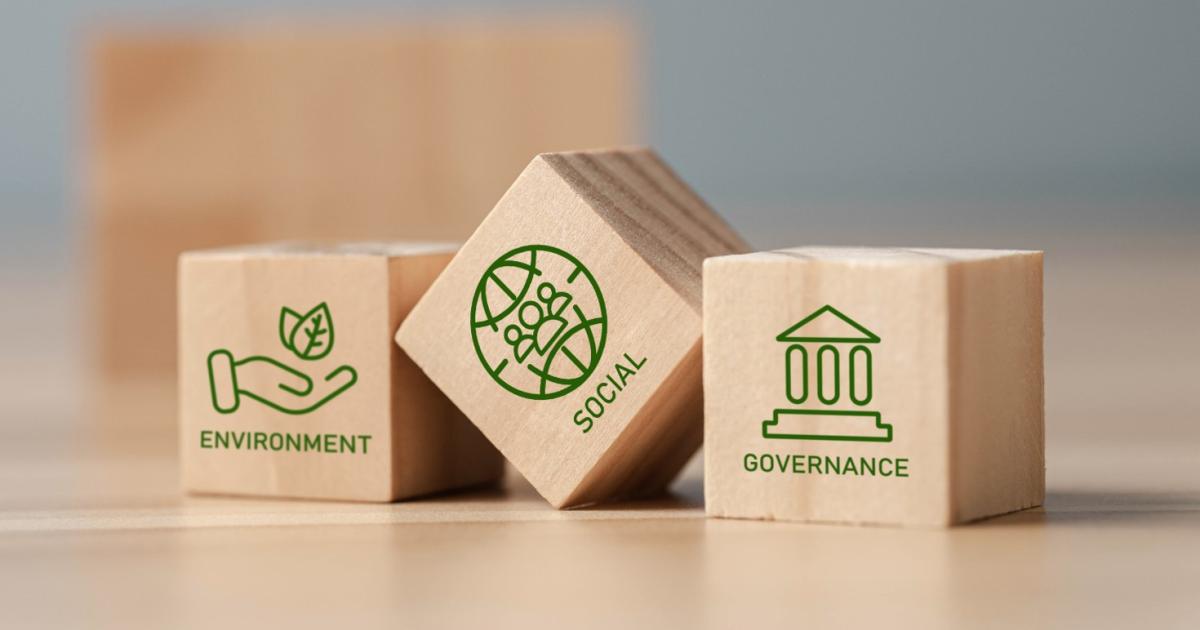
Many companies are pretty proud of their ESG reports. Each year from April to June, the LinkedIn feeds of sustainability professionals fill with posts from friends, colleagues and connections sharing these delights of disclosure, announcing that their company’s report is ready for the world.
As someone who knows firsthand the Herculean process of creating these reports, their completion certainly feels worthy of celebration. And while reports are effective tools for disclosing sustainability information to investors, rating agencies and other data-hungry stakeholders, few other folks even notice them.
Nobody has bothered to collect data on how few people actually read ESG reports (Spoiler: It’s few, very few.), but we do know that 96 percent of the S&P 500 and 81 percent of Russell 1000 companies are publishing them. This is tremendous progress, considering that just about a decade ago, only 20 percent of these companies were reporting, according to the Governance & Accountability Institute. And with regulations mandating climate disclosure coming in hot from the U.S. Securities and Exchange Commission, the remaining holdouts will soon join the reporting fray.
More quality reporting on corporate sustainability performance is a good thing. But when it comes to communicating sustainability, reporting simply isn’t enough. Most business leaders agree. According to a new survey of senior level executives in the United States, 96 percent of respondents say it’s important to share such stories, and nearly half (45 percent) believe their companies aren’t talking enough about those initiatives.
Companies can and must go beyond their reporting to tell a sustainability story that sticks.
An ESG report is only a starting point
For many companies, an ESG report is the only substantial communication they put out around their social and environment impact. And, as investor interest in ESG reporting increases, so does the scrutiny the C-suite members and other senior leaders focus on their creation.
Companies dedicate many months out of the year to developing the strategy, content and design for these documents. With many sustainability teams being no more than a couple of people at best — and a single individual at worst — sometimes so much time and attention is paid to reporting that there’s little else left for other forms of sustainability communication.
In an ideal world, your corporate communication strategy would effectively be your sustainability communication strategy.
But an ESG report is not the end-all-be-all of sustainability communication; it’s a starting point. Think of the report as your single source of truth toward which all of your sustainability communications points.
Unite corporate communications and ESG teams
Corporate sustainability professionals often lack communications expertise, just as communications professionals tend to lack sustainability know-how. While a growing number of roles focus on sustainability communication, companies typically must make do without. And because sustainability and communications teams often are siloed, telling an engaging and authentic sustainability story becomes difficult.
As I wrote recently, companies risk what I call “greenbumbling” — making a sustainability claim that is truthful but boring. In a rapidly changing ESG ecosystem, what it means to be a leader is constantly in flux. Fifteen years ago, if your company was issuing sustainability reports, it might have been seen as leading the pack. Today, it’s business-as-usual. Likewise, even just a few years ago announcing net zero commitments would have been seen as impressive — today, with at least 900 companies setting such goals, it wouldn’t turn many heads. The next frontier of corporate sustainability leadership lies with those companies that dare to align their business and sustainability strategy, stand up to the anti-ESG bullies and make climate action their top government relations priority.
Yet too many companies continue to tout simple sustainability actions as novel — such as, you guessed it, issuing an ESG report. Often, this occurs due to a lack of understanding of the broader sustainability ecosystem in which a company operates, or underestimating the sophistication of particular audiences. What intrigues one audience may bore another.
To avoid greenbumbling, organizations must ensure that their sustainability and communications teams are working together to identify and deliver authentic, relevant stories that stick with audiences. Many sustainability professionals lack strong communications expertise, while corporate communications practitioners don’t usually have sustainability know-how.
For many companies, an ESG report is the only substantial communication they put out around their social and environment impact.
Bridging this expertise gap, either through internal hires or external consultants, can ensure your company is telling the right stories, in the right way at the right time. Some companies are starting to create roles with “sustainability communications” in the title. Mars, for example, has a director of sustainability communications & engagement who works on communicating its Sustainable in a Generation Plan to the public and stakeholders. Likewise, companies might hire a consultant such as myself to serve as the “translator” between internal ESG and communications teams.
Create a sustainability communication strategy
Strategy is about choices, and a sustainability communication strategy requires choosing what you will say to whom, when and how often. In an ideal world, your corporate communication strategy would effectively be your sustainability communication strategy. Patagonia has famously done this by claiming that Earth is its only shareholder — granted, this is much easier for a privately held company to do.
But if your company isn’t yet ready to align business and sustainability strategy, purpose is a good place to start. Purpose is the place where corporate and sustainability communications intersect. Connecting your sustainability communication strategy to your corporate purpose will make it easier for your communication teams to develop and deliver authentic and engaging stories that make the most sense for your brand. Ben & Jerry’s, for example, does a great job of communicating its values and purpose of “using ice cream to change the world.”
Having a strong strategy also will allow you to know when and when not to speak out on important social and environmental issues as they arise. This will help you to avoid greenwashing and make the stories you do tell much more compelling.
Repetition to retention
One of the biggest problems with ESG reports is that they usually only come out once a year. With sustainability storytelling, repetition is the best route to retention. The more consistent you are with your messaging — both in terms of content and cadence — the more likely your stakeholders will remember the information you are trying to convey.
While not all companies have big budgets to spend on fancy sustainability advertising campaigns, most should be able to put out regular blog content, social media posts, newsletters and more. If all else fails, you can break up the information contained in your ESG report and turn it into bite-sized stories targeted to the stakeholders that care most about a particular topic.
As reporting becomes increasingly more mainstream — and eventually mandated — it will become more important for companies to find ways to break through the noise to tell effective sustainability stories that spur stakeholders into action. Companies that put in the work now to create a solid sustainability communication strategy and begin putting out comprehensive and consistent content will reap the benefits tomorrow.
- SEO Powered Content & PR Distribution. Get Amplified Today.
- PlatoAiStream. Web3 Data Intelligence. Knowledge Amplified. Access Here.
- Minting the Future w Adryenn Ashley. Access Here.
- Buy and Sell Shares in PRE-IPO Companies with PREIPO®. Access Here.
- Source: https://www.greenbiz.com/article/why-your-esg-report-isnt-enough
- :has
- :is
- :not
- :where
- ][p
- $UP
- 20
- 500
- 7
- a
- Able
- About
- According
- accountability
- Action
- actions
- actually
- Advertising
- agencies
- ago
- align
- All
- allow
- also
- an
- and
- Announcing
- Another
- April
- ARE
- around
- AS
- At
- attention
- audience
- audiences
- Authentic
- avoid
- BE
- because
- become
- becomes
- been
- begin
- being
- believe
- ben
- benefits
- BEST
- between
- Beyond
- Big
- Biggest
- Blog
- Boring
- both
- brand
- Break
- broader
- Budgets
- business
- but
- by
- C-suite
- Cadence
- call
- Campaigns
- CAN
- care
- Celebration
- certainly
- change
- changing
- choices
- choosing
- claim
- Climate
- climate action
- colleagues
- collect
- come
- comes
- coming
- commission
- commitments
- communicating
- Communication
- Communications
- Companies
- company
- Company’s
- compelling
- completion
- comprehensive
- Connecting
- Connections
- considering
- consistent
- constantly
- consultant
- consultants
- contained
- content
- continue
- Corporate
- Couple
- Cream
- create
- Creating
- creation
- data
- decade
- dedicate
- deliver
- Design
- develop
- developing
- difficult
- Director
- Disclosing
- disclosure
- do
- documents
- does
- done
- Dont
- due
- each
- earth
- easier
- ecosystem
- Effective
- effectively
- either
- else
- engagement
- engaging
- enough
- ensure
- Environment
- environmental
- ESG
- Ether (ETH)
- Even
- eventually
- example
- exchange
- executives
- expertise
- external
- fails
- famously
- few
- fill
- Find
- FLUX
- Focus
- For
- forms
- friends
- from
- Frontier
- gap
- generation
- Go
- Goals
- good
- governance
- Government
- granted
- great
- Growing
- guessed
- Half
- Have
- heads
- Held
- help
- hire
- hires
- HOT
- How
- HTML
- HTTPS
- i
- ICE
- ice cream
- ideal
- identify
- if
- Impact
- important
- impressive
- in
- Increases
- increasingly
- individual
- information
- initiatives
- Institute
- interest
- internal
- into
- investor
- Investors
- isn
- issues
- issuing
- IT
- ITS
- Job
- join
- jpg
- june
- just
- Know
- Lack
- leader
- leaders
- Leadership
- leading
- least
- left
- Level
- lies
- likely
- little
- Mainstream
- make
- Making
- many
- mars
- May..
- means
- Media
- Members
- messaging
- might
- months
- more
- most
- much
- must
- nearly
- net
- New
- Newsletters
- next
- no
- Noise
- Notice..
- novel
- now
- number
- of
- often
- on
- once
- ONE
- only
- operates
- or
- organizations
- Other
- out
- Pack
- paid
- particular
- Patagonia
- People
- percent
- performance
- Place
- plato
- Plato Data Intelligence
- PlatoData
- Point
- points
- Posts
- pretty
- priority
- problems
- process
- professionals
- Progress
- proud
- public
- purpose
- put
- Putting
- quality
- rapidly
- rating
- Rating agencies
- Read
- ready
- regular
- regulations
- relations
- relevant
- remaining
- remember
- report
- Reporting
- Reports
- requires
- respondents
- retention
- right
- Risk
- roles
- Route
- s
- S&P
- S&P 500
- say
- Securities
- Securities and Exchange Commission
- seen
- senior
- sense
- serve
- setting
- Share
- shareholder
- sharing
- should
- Simple
- simply
- single
- So
- Social
- social media
- Social Media Posts
- solid
- some
- Someone
- Soon
- Source
- speak
- spend
- stakeholders
- stand
- start
- Starting
- States
- Stick
- Stories
- Story
- storytelling
- Strategy
- strong
- substantial
- such
- Sustainability
- talking
- targeted
- teams
- tell
- terms
- than
- that
- The
- the information
- the world
- their
- Them
- These
- they
- thing
- think
- this
- those
- Through
- time
- Title
- to
- today
- together
- tomorrow
- too
- tools
- top
- topic
- toward
- tremendous
- truth
- TURN
- typically
- u.s.
- U.S. Securities
- U.S. Securities and Exchange Commission
- understanding
- United
- United States
- using
- usually
- Values
- very
- was
- Way..
- ways
- we
- were
- What
- when
- which
- while
- WHO
- why
- will
- with
- without
- Work
- working
- works
- world
- Worst
- would
- year
- years
- yet
- you
- Your
- zephyrnet
- zero








